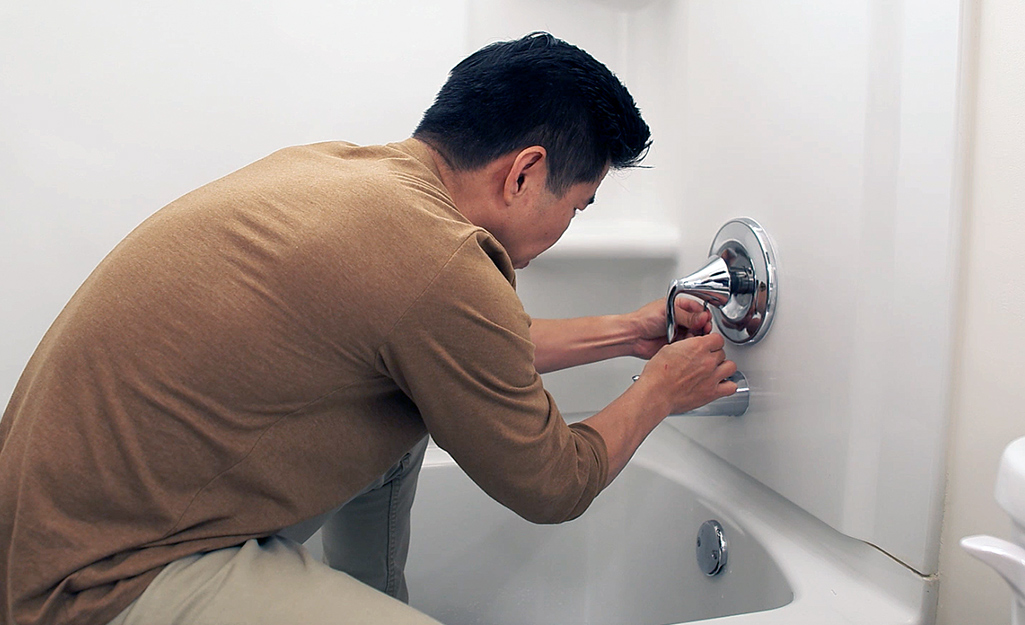Do you find yourself interested in details about How to Fix a Dripping or Leaky Faucet ?

Trickling faucets may feel like a minor aggravation, however their influence goes beyond just the nuisance of the audio. From wasting water to incurring unneeded financial costs and health and wellness dangers, overlooking a dripping faucet can result in different repercussions. In this post, we'll look into why it's critical to resolve this common household issue promptly and efficiently.
Wastage of Water
Environmental Impact
Trickling taps add substantially to water wastefulness. According to the Epa (EPA), a solitary faucet dripping at one drip per secondly can lose more than 3,000 gallons of water each year. This not just strains water sources however likewise impacts ecosystems and wildlife dependent on them.
Financial Expenses
Raised Water Costs
Beyond the environmental effect, leaking taps can pump up water costs considerably. The collected wastefulness gradually converts right into greater energy costs, which might have been prevented with timely repair work.
Potential Residential Property Damage
In addition, long term leaking can result in harm to components and surfaces bordering the tap. Water accumulation can create discoloration, corrosion, and also architectural problems if left unattended, causing extra fixing expenses.
Health Worries
Mold and Mold Development
The consistent presence of dampness from a dripping faucet develops an optimal setting for mold and mildew development. These fungi not just compromise indoor air quality but also posture wellness dangers, especially for individuals with respiratory conditions or allergic reactions.
Waterborne Illness
Stagnant water in trickling taps can come to be a breeding ground for bacteria and various other microorganisms, boosting the risk of waterborne illness. Contaminants such as Legionella microorganisms flourish in stationary water, potentially leading to significant ailments when consumed or inhaled.
DIY vs. Expert Repair work
Advantages and disadvantages of DIY Repair Service
While some might attempt to fix a leaking faucet themselves, DIY repair work come with their very own set of difficulties. Without proper expertise and devices, DIY efforts can aggravate the problem or result in incomplete fixings, extending the trouble.
Benefits of Working With an Expert Plumber
Working with an expert plumber makes certain that the underlying reason for the trickling faucet is dealt with properly. Plumbing technicians have the competence and tools to diagnose and repair faucet concerns successfully, saving time and reducing the danger of more damage.
Step-by-Step Overview to Dealing With a Dripping Faucet
Devices Required
Before trying to deal with a trickling tap, gather the essential tools, including a flexible wrench, screwdrivers, substitute components (such as washing machines or cartridges), and plumber's tape.
Common Tap Issues and Their Solutions
Determine the type of faucet and the details issue creating the drip. Typical problems consist of worn-out washing machines, rusty valve seats, or malfunctioning O-rings. Describe manufacturer instructions or on the internet tutorials for detailed support on fixings.
Preventive Measures
Routine Maintenance Tips
To avoid trickling faucets, execute regular maintenance such as cleaning aerators, checking for leakages, and replacing worn-out parts promptly. Furthermore, consider mounting water-saving devices or updating to a lot more efficient components.
Relevance of Prompt Services
Resolving leaking taps as quickly as they're seen stops additional water wastage and potential damages, eventually saving both water and cash over time.
Impact on Building Worth
Understanding of Well-Maintained Home
Maintaining a residential or commercial property in good condition, consisting of dealing with upkeep issues like trickling faucets, improves its regarded value and worth among prospective customers or renters.
Impact on Resale Value
Qualities with well-maintained plumbing fixtures, consisting of taps, command higher resale values in the realty market. Resolving dripping faucets can contribute to a positive perception throughout home assessments and arrangements.
Ecological Duty
Specific Payment to Preservation
Taking duty for fixing dripping taps straightens with more comprehensive initiatives towards water preservation and ecological sustainability. Every person's actions collectively make a significant impact on maintaining valuable resources.
Sustainable Living Practices
By focusing on timely repair work and adopting water-saving behaviors, people add to sustainable living techniques that benefit both present and future generations.
Verdict
Attending to a dripping tap exceeds mere ease; it's a vital step toward saving water, reducing monetary costs, and securing wellness and residential property. Whether through DIY fixings or professional help, doing something about it to repair leaking taps is a tiny yet impactful method to advertise responsible stewardship of resources and contribute to a healthier, a lot more lasting future.
How to Fix a Leaky Faucet: Step-by-Step Repair Guide
A leaky faucet may seem like a simple annoyance, but if it's not fixed promptly, that leak could cost hundreds to potentially thousands. From water damage to mold, mildew, and high water bills, even a tiny leak can be catastrophic if left unattended. Damage like this can even affect the overall value of your home, so it's important to take the right approach for leaky faucet repair. You may need the help of a plumber in some cases, but we've got a few tips you can try on how to fix a leaky faucet before calling the pros.
Four Faucet Types
When you're learning how to fix a leaky faucet, the first step is knowing what kind of faucet you're working with! There are four common types.
Cartridge Faucets
Cartridge faucets come in one- or two-handled varieties. In one-handled cartridge faucets, hot and cold water combines in a single cartridge. In the two-handled versions, hot and cold water are controlled separately and mixed in the faucet.
Ball Faucets
Ball faucets have a single lever you push up and down to adjust the pressure and rotate to change the temperature. A slotted metal ball controls the amount of water allowed into the spout.
Compression Washer Faucets
They're the oldest type of faucet, but they're still used in many homes — especially older ones. Compression faucets have two separate handles that, when turned, raise or lower the washer that seals a water valve. This valve stops water from flowing through the faucet when it is turned off.
Disc Faucets
Disc faucets rarely need to be repaired due to their maintenance-free design. The water flow is controlled by two discs — the upper one raises and lowers against a fixed lower disc, creating a watertight seal. If your disc faucet starts leaking, you may need to replace the seals or clean residue buildup from the inlets.
Fixing a Leaky Faucet
Step 1: Turn Off the Water
Whether you're learning how to fix a leaky bathtub faucet or how to fix a leaky kitchen faucet, always turn off the water supply to your working area when you're fixing a leak. The last thing you want is a flood added to your list of things to fix.
Look for the shutoff valves below your sink or around the tub and turn them clockwise to stop the water flow. If your faucet doesn't have shutoff valves, you may need to turn off the water for the whole house. Check to make sure it's off by turning the faucet on. If nothing comes out, you're ready to start the repair.
Step 2: Take Apart the Faucet
How you disassemble your faucet depends on the type of fixture you have. You can use a flathead screwdriver to remove the caps on top of the handle or handles for cartridge and compression faucets. Inside, you should see handle screws. Unscrew these with a screwdriver to remove the handle.
Disc- and ball-style faucets will typically have an inlet screw near the handle, and removing that will reveal the interior of the faucet.
Detach the Valve Stem
For cartridge- and compression-style faucets, you'll see the inner valve stem or cartridge once you remove the faucet handles. If you have a compression faucet, unscrew the brass valve stem. If you have a cartridge faucet, pull out the cartridge. If your cartridge has been in place for a while, it may require some tools or extra force to remove it due to mineral deposits.
Examine and Replace Parts
Once you've removed the parts, check them out to confirm what needs to be replaced. You may see corroded rubber washers, O-rings, stems, or cartridges. On a ball-style faucet, check the seats and springs for damage.
If you need to repair a leaky disc faucet, check the inlet and seals on the lower disc.
Once you determine what parts must be replaced, visit your local hardware store. Bring the damaged parts with you to ensure you can purchase the correct components to replace them.
Clean Valves and Faucet Cavity
If you've removed a stem or cartridge, you may notice mineral buildup in the faucet's threads. Use white vinegar to clean the valve seat by soaking it for a few minutes, then scrub it away with a soft toothbrush and rinse with warm water. You can also clean the interior of the faucet in the same way.
Reassemble the Faucet
Once your faucet is cleaned and the required parts have been replaced, it's time to reassemble it. Put the pieces back together and slowly turn the water supply back on. Doing this slowly is crucial because too much initial water pressure can damage the new hardware you've just installed.
https://homewarranty.firstam.com/blog/how-to-fix-leaky-faucet

We were made aware of that editorial on What Causes Leaky Faucets & How To Fix Them through an acquaintance on our other web blog. Sharing is nice. Helping others is fun. Thanks a bunch for your time. Revisit us soon.
Comments on “My Benefits of Resolving a Broken Faucet”